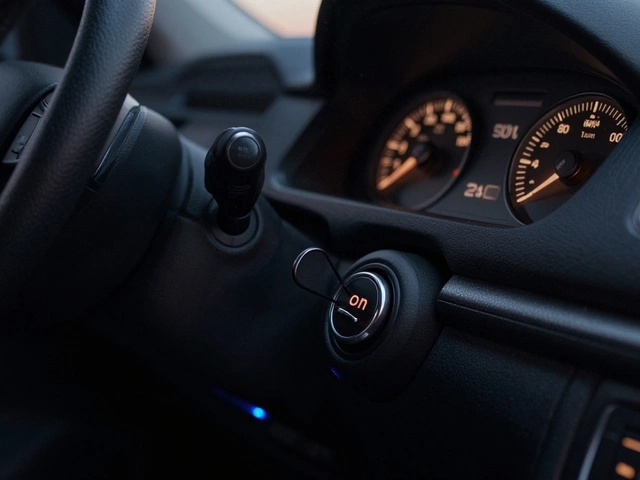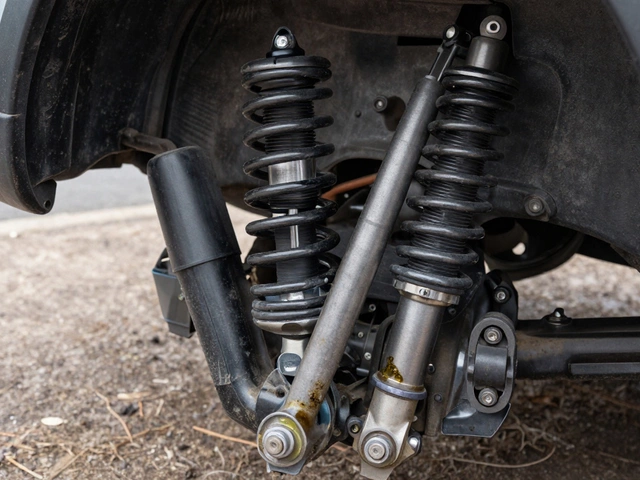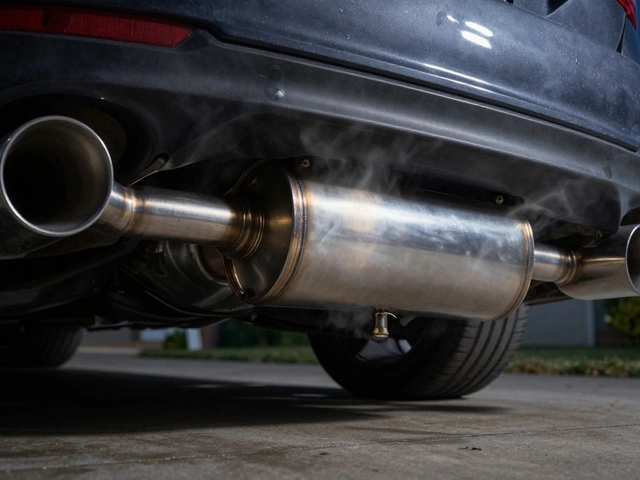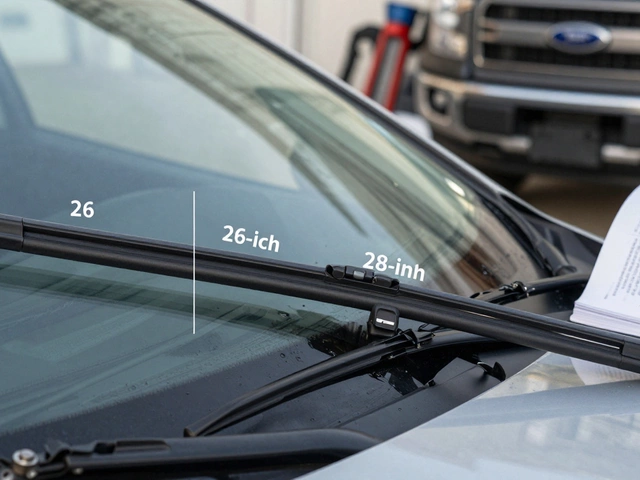Ever been in that spot where your car's engine oil light comes on and you're thinking, "Can I just top off the oil and skip the whole filter ordeal?" It's a common question for those who dread the full-blown oil change routine. Let's break it down: you can indeed add oil without touching the filter, but is it a smart move?
First, a bit about engine oil. It's the lifeblood of your car, keeping all those moving parts in the engine humming smoothly. But as it does its job, it picks up dirt and debris, and this is where the filter saves the day. The filter keeps this gunk out, letting only clean oil circulate. So, while you could skip the filter change, it means more debris in the oil, which isn't great for your engine in the long run.
Topping off the oil might feel like an easy fix, but let’s face it, it’s like putting a band-aid on a bigger problem. It could keep things running for a bit, but prolonged avoidance of replacing the filter might bring you unexpected repairs and costs. Keep reading to learn more about why the filter matters and how you can take care of both oil and filter like a pro.
- The Role of Engine Oil
- Why Filters Matter
- Topping Up vs. Full Oil Change
- Signs Your Filter Needs Changing
- DIY Oil and Filter Change Tips
- Common Myths Debunked
The Role of Engine Oil
Let's get right to it: engine oil is like the unsung hero under the hood. It doesn't get the attention or the spotlight, but it's essential for your car's well-being. Think of engine oil as the lifeblood of your vehicle. It keeps things nice and lubed up, reducing friction and preventing those metal bits in the engine from grinding against each other.
When everything's working fine, your car just runs. But if you slack on the oil, it'll feel it first. Those moving parts start to wear out faster, leading to more trips to the mechanic. Oil also helps in cooling the engine. The heat produced from combustion is no joke, and the oil helps to carry some of that heat away, keeping the engine temperature in check and preventing it from overheating.
Oh, and it's a champ at keeping things clean, too. As the oil circulates, it picks up dirt and debris, stopping these bits from sticking around. But remember, guys: good things come to an end. Over time, oil breaks down. Heat makes it thick and sludgy, and that just doesn't flow well. This is why regular oil changes are crucial.
Different vehicles might need different types of oil. You have your conventional oil, synthetic, and maybe some blends. Each has its perks, but synthetic oils are often praised for lasting longer and performing better under extreme temperatures.
- Conventional Oil: Basic stuff, great for everyday driving, especially in older engines.
- Synthetic Oil: Offers better protection, lasts longer, and handles high heat better. Perfect for high-performance engines.
- Blend: A mix that offers a bit of both worlds, suitable for drivers seeking performance and protection but at a lower cost than full synthetic.
So, there you have it. Engine oil isn't just some stuff you pour in. It's central to keeping your car cruising smoothly. Next time the oil light flicks on, remember you're not just topping up a fluid; you're ensuring your engine’s health. Keep it regular, and your car’s bound to give back more miles on the road.
Why Filters Matter
Think of your car's oil filter as the unsung hero of your engine's wellbeing. It's got a crucial role to play in keeping things running smoothly. Simply put, the filter keeps the engine oil free from dirt, metal particles, and other debris that naturally accumulate over time.
When the car oil change skips a filter swap, you're essentially letting all that gunk stay in the oil. This reduces the oil’s ability to lubricate effectively, and can lead to increased wear and tear on engine parts. No one wants to drive around with what's basically an oil-slurry trying to protect their engine.
To make it clearer, consider this: using an old, clogged filter can cause oil to bypass the filter altogether. This means unfiltered oil circulates through the engine, potentially leading to buildup and engine inefficiency. A simple filter change boosts the performance of your engine oil, extending the life of your car and possibly saving you from costly repairs.
Here's a little tip: while manufacturers might recommend a filter change with every oil change, it doesn't hurt to give it some extra attention, especially if you're driving in dusty areas or putting in a lot of stop-and-go miles. It’s all about protecting your investment. Nobody enjoys unexpected breakdowns, and keeping a clean filter is just one simple step to prevent them.
Topping Up vs. Full Oil Change
Alright, so you're standing there with a bottle of engine oil, wondering if a quick top-up will save you a trip to the mechanic. Topping up is indeed the easier, faster option. But let's look at what you're actually doing. When you just add oil, you're mixing new, clean oil with existing older, dirtier oil. This might keep the levels right, but it's not exactly ideal for your engine's health in the long run.
Think of it as watering a plant with slightly dirty water—sure, it gets moisture, but it's not the best quality. A full oil change swaps out all the old oil for fresh stuff, and it replaces the filter too. This ensures you get rid of the grime that builds up and can cause that dreaded wear and tear on your engine.
The rule of thumb is to do a full oil and filter change every 5,000 to 7,500 miles, depending on what your car manual says and the kind of driving you do. If you’re mostly doing short trips in stop-and-go traffic, you might need to do it more often.
Here's a quick look at oil life averages to give you an idea:
| Type of Oil | Miles Before Change |
|---|---|
| Conventional | 3,000 - 5,000 miles |
| Synthetic Blend | 5,000 - 7,500 miles |
| Full Synthetic | 10,000 - 15,000 miles |
Choosing between topping up and a full change isn’t just about convenience. It’s about keeping your car running smoothly and avoiding those shockingly high repair bills. So while it's easy to just pour in a bit more oil, it's worth considering the benefits of doing it right with a proper oil and filter change.
Next time you're thinking of just grabbing that oil bottle, remember that doing the full job might be a little more hassle now but can save you serious headaches (and money) down the road.

Signs Your Filter Needs Changing
Alright, so you’re probably wondering when it's time to swap out that old filter. Your car isn’t going to send you a postcard, so you’ve got to look for some clues. Trust me, there are a few dead giveaways that your filter might be begging for a change.
First off, if your car’s engine oil looks dirty or gritty when you check it, that’s a pretty solid sign. Fresh oil is amber and smooth, but if it’s dark and thick, it means the filter change has been missed a few too many times. It's struggling to keep everything clean.
Then there’s the engine performance. Notice any weird noises or a drop in horsepower? The engine might sound more like a grumbling bear than its usual purr. That's often because the engine’s not getting enough clean engine oil to run smoothly.
Your dashboard can also be your best friend here. An oil pressure warning light appearing is a wake-up call. Insufficient pressure might come from blockages in a dirty filter. Pay attention to it!
If you detect a burnt oil smell, that’s not normal. The smell could mean the oil isn’t flowing well due to a clogged filter, and it’s overheating in the engine. Not a pleasant sign at all.
Here's a quick checklist to make it easy:
- Dark, dirty engine oil
- Strange engine noises or performance issues
- Oil pressure warning light pops up
- Burnt oil smell
Got one or more of these going on? It might be time to grab a new filter. Ensuring your filter is good is super important in keeping your engine healthy and saving you from bigger issues down the road. A little attention now can save a lot of hassle, and cash, later on.
DIY Oil and Filter Change Tips
Changing your car's engine oil and filter isn't rocket science, but it does take a bit of know-how and the right tools. Car maintenance isn't just reserved for the pros—once you get the hang of it, you'll save money and feel like a car maintenance wizard. Here’s how you can do it all by yourself.
Here's what you'll need:
- A new oil filter compatible with your car
- Fresh engine oil (check your car's manual for the right type)
- An oil filter wrench
- A drain pan
- A wrench set
- Gloves and rags for cleanup
Now, let's get to the steps:
- Warm Up the Engine: Run the car for a few minutes to warm up the oil; warm oil drains out faster.
- Secure the Car: Park on a flat surface and ensure the car is stable. Use jack stands if needed.
- Drain Old Oil: Place the drain pan under the oil pan. Use the wrench to remove the drain plug. Let the old oil completely drain out.
- Change the Filter: Use the oil filter wrench to take off the old filter. Be cautious as it might still have hot oil.
- Install New Filter: Apply a bit of fresh oil to the gasket of the new filter for a secure fit. Screw it in by hand and tighten it slightly.
- Add New Oil: After replacing the drain plug, pour the new oil in using a funnel. Check the amount with a dipstick to ensure it's not overfilled.
- Check for Leaks: Start the engine and let it run for a few minutes. Check under the car for leaks.
- Dispose of Old Oil Safely: Most auto shops or recycling centers will take your old oil.
Pro tip: Keep track of when you did the oil change so you know next time when it's due. Many drivers also like using apps for this. Remember, keeping up with regular oil changes and filter replacements is key to a happy engine.
Common Myths Debunked
When it comes to car maintenance, myths run wild. Let's clear up some of these misconceptions, especially around car oil change and filters, so you don't end up doing more harm than good.
Myth 1: The Type of Oil Doesn't Matter
Some folks believe that all oils are the same. Not true! Your car manual usually suggests a specific type because the wrong oil can lead to poor performance or even damage. Stick to what's recommended in your manual. The type of engine oil affects things like fuel efficiency and engine protection.
Myth 2: You Can Change Oil Without Alternating the Filter
We've all heard people say it's okay to change oil but ignore the filter. Sure, you can do that, but it means dirty oil continues circulating, causing wear and tear on engine parts. That filter keeps the gunky stuff out, so it's worth replacing both parts regularly.
Myth 3: Switching to Synthetic Oil Can Cause Leaks
Here's another common one. People claim synthetic oil will cause leaks, but the reality is, if you have an older car with worn gaskets, any oil could leak. High-quality synthetic oil offers better protection and performance, making it a worthwhile investment.
Myth 4: Thicker Oil Is Better In The Summer
Some say thicker oil is ideal for warmer months, believing it provides better protection. However, too thick, and your oil might not flow properly. Stick to the manufacturer’s suggested viscosity regardless of the season.
Myth 5: More Oil Means Better Performance
Overfilling your engine with oil isn’t a good idea. It actually creates pressure issues, which might lead to engine seals blowing out. Always aim for the oil level recommended by your car manufacturer.








